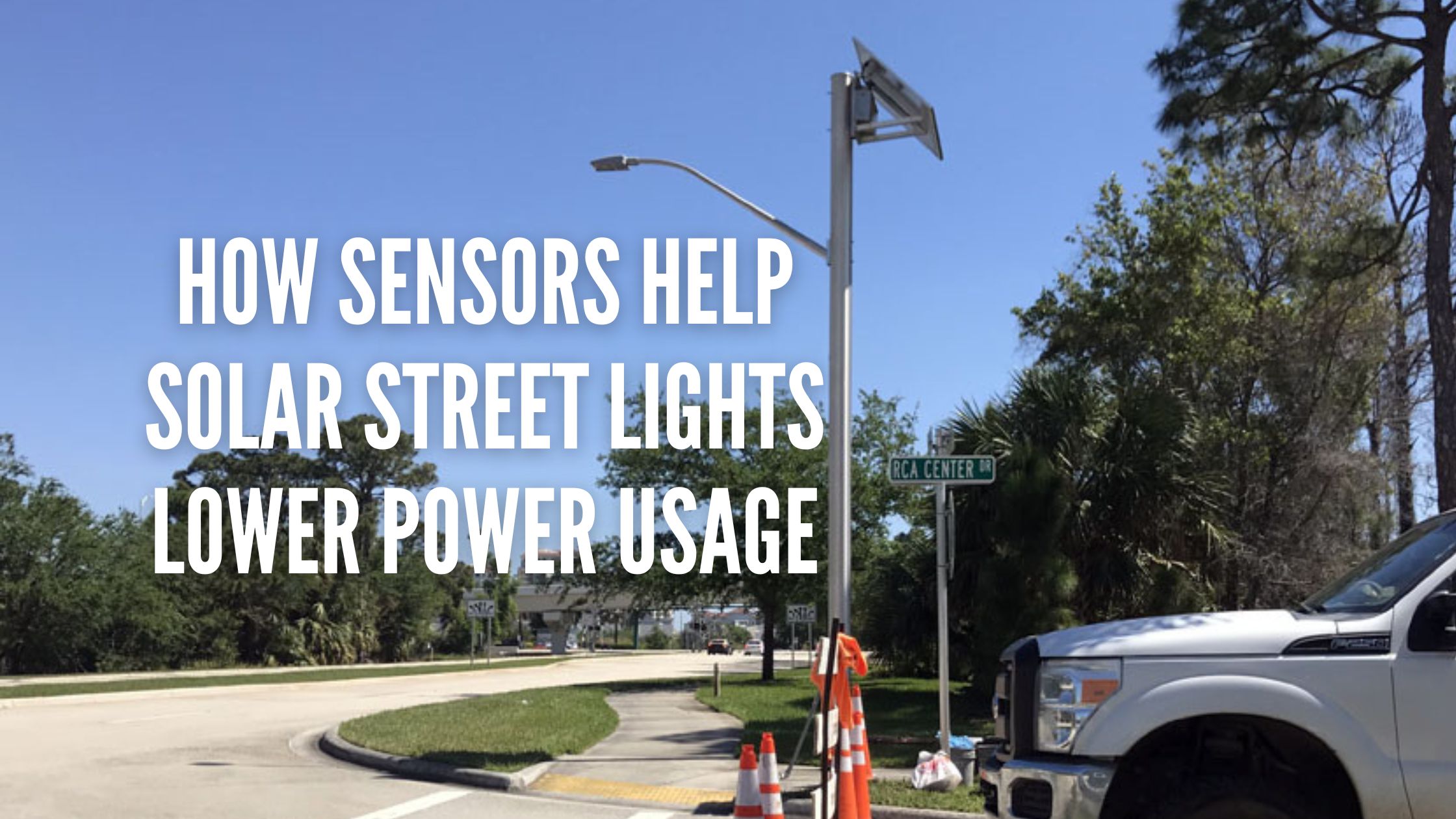Solar street lights are a great way to bring in lighting without having to trench in traditional electrical power; however, they can be costly to purchase and install because of their size. There are ways to lower the energy requirement throughout the night and lower the cost of solar power by implementing sensors.
These sensors can help lower the cost and size of the system significantly, helping provide a much faster return on investment. Let’s see how these sensors work and how they can help the solar system.
Since roadways are not used at all times of the night, having the lights reduce output after a set time is a great way to reduce the energy requirement from solar. Reducing the output wouldn’t work well on a highway or freeway, but smaller roadways, like for a housing or rural community, would work great.
For example, having the lights reduce after midnight would not only save energy but also allow for lower illumination levels and reduce the impact on the circadian rhythms of the people and animals in the area. The lights could also then come back to full output an hour before dawn, allowing the early morning people to have the same safety and security they would at night.
Motion detectors are another great way to use sensors for solar street light systems. The lights can operate at a reduced output and only come to full intensity when people are in the area. This is not always as popular, but an option with most systems. Proper sizing still needs to be taken into consideration when designing a system like this, and a good understanding of active periods is key. The solar and battery should never be undersized when using motion detectors.
The sensors are integrated into the system, sometimes mounted on the side of a pole or inside a fixture. Motion detectors are now almost always integrated into the fixture head itself so that it can see well, unobstructed by anything else in the area, seeing 360 degrees around for movement. The cone is also larger because of the height of the installation, ensuring that it isn’t too low and small not to be able to detect movement.
There are other sensors available that can allow the lights to turn on and off as needed. If you have a remote site that doesn’t get much activity at night but occasionally needs to be illuminated, there are sensors for just that. It allows a site to be turned on and off as needed.
Finally, the integration of sensors can allow for areas that require more illumination during times of activity to fit inside the scope of solar. Say you need really bright light, but only for a short period of time during an activity, but the rest of the time, that much light isn’t required. Solar has the ability to capture a small fraction of the power produced by the sun, and the battery can only store so much power. Sensors allow areas that don’t have as many solar capabilities to utilize an off-grid system still. The solar street lights can then operate at a higher output than they would be able to if they had to operate at full all night.
See how these solar street light applications are perfect for neighborhoods, HOAs, remote sites, and even small communities. The use of sensors can halve the amount of solar needed, reducing the cost of the solar street light assembly. Lowering the power usage and cost will make solar a more feasible option and help communities be a little greener in the end by reducing their overall electrical usage.



